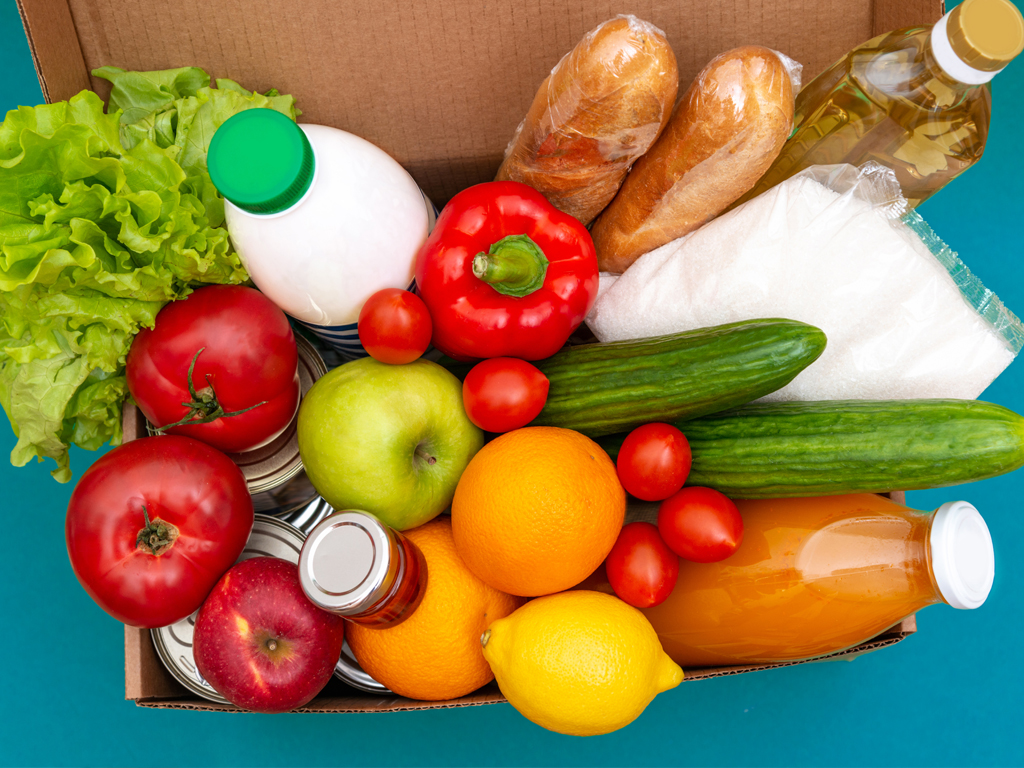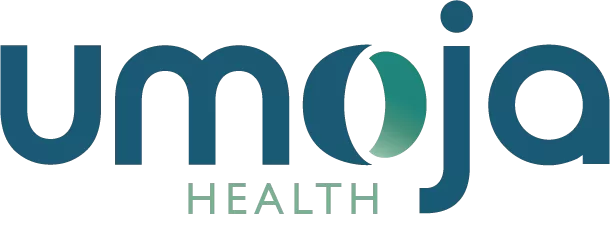Government Solutions
Expanding Access to Nutritious Foods for WIC Participants
Why WIC Works
The Women, Infants, and Children (WIC) program is one of the longest running, most effective nutrition initiatives in the United States. Ensuring expectant moms and their children have access to nutritious foods during pregnancy and in the early stages of growth improves health outcomes, infant feeding practices and cognitive development, and reduces long-term healthcare costs among a wide range of other benefits.
The positive impact on the health and wellbeing of mothers and their children through the WIC program is proved. Innovations that increase food access and the utilization of benefits can further reduce nutrition insecurity and improve health for more low-income families. That’s where the JPMA + Umoja Health come in.
Innovative Shopping Experiences
JPMA, the developers of the WICShopper and WICSmart applications, and Umoja Health have joined forces to introduce new shopping experiences for WIC participants. Together, our goal is to increase utilization of WIC benefits with simplified tools, innovative solutions, and access to nutritious, affordable foods delivered directly to homes.
WIC Mobile Shopping Benefits:
- Access for ALL – participants living in urban, suburban, rural and remote areas
- Choice of a wide variety of WIC-approved products at affordable prices
- Convenient direct-to-home delivery removes transportation, time and travel cost barriers for participants
- Real time benefits tracking
- NO DELIVERY FEES to participants or agencies
- Substitutions simplified – shopping selections reflect Umoja’s real-time inventory of WIC-approved products
- Auto-reorder feature ensures easy, consistent access to nutritious foods for busy households
- Protects participants who have high-risk health concerns or challenges

The ordering process through the WIC Shopper App is simple and intuitive with benefits tracking, pre-selected substitutions, order history, and reordering features.
Multiple Models Meet WIC Participants Where They Are
Some WIC shoppers prefer to get certain products from local retailers and farmers markets. Others like curbside shopping. Providing a range of options for WIC participants helps meet them where they are with choices for how and where they want to use their benefits to meet their needs. Introducing the WIC mobile shopping and home delivery model provides more choice, convenience, and flexibility for families that may face unique challenges to utilizing their benefits. Low-income families living in rural areas, for example, often have fewer choices for local retailers, longer distances to the store and other barriers that home delivery helps address. For more information, connect with our team[HYPERLINK] today.
Read More
Expanding WIC Access Through Innovation and Technology
The Women, Infants, and Children program serves approximately 6.2 million participants monthly, making it one of America’s most successful nutrition interventions. Research consistently demonstrates WIC’s effectiveness in improving birth outcomes, supporting healthy child development, and reducing healthcare costs.
However, program participation rates remain below eligibility levels in many areas. Transportation barriers, work schedule conflicts, and limited store options prevent many eligible families from accessing benefits fully. Rural communities face particularly significant challenges with program access.
Traditional WIC shopping requires visits to authorized retailers during specific hours with physical benefit cards or vouchers. This model works well for some participants but creates insurmountable barriers for others. Working parents, families without reliable transportation, and those in rural areas struggle with these requirements.
Mobile Shopping and Home Delivery Solutions
WIC mobile shopping applications transform benefit utilization by enabling online ordering and home delivery. Participants can shop approved products from their homes, eliminating transportation barriers while providing access to wider product selections than local stores might offer.
Real-time benefit tracking prevents overspending while simplifying shopping experiences. Traditional WIC shopping often involves complex calculations to stay within benefit allowances. Mobile applications automatically track spending against available benefits, reducing checkout confusion and embarrassment.
Product substitution capabilities address out-of-stock situations proactively. When selected items aren’t available, applications suggest approved alternatives automatically. This feature prevents wasted trips and ensures participants receive nutritionally equivalent products consistently.
Geographic reach expands dramatically through home delivery services. Rural participants living hours from authorized retailers gain access to full WIC benefits through delivery programs. Urban participants in food deserts receive options beyond limited local store selections.
Addressing Rural WIC Access Challenges
Rural WIC clinics often operate limited hours due to staffing and budget constraints. Participants might need to travel significant distances for appointments, creating additional barriers to program participation. Mobile clinic services and telehealth options help address these geographic challenges.
Authorized retailer limitations affect rural communities disproportionately. Small towns might have only one or two WIC-authorized stores with limited product selections. Online shopping and delivery services provide access to full product catalogs regardless of local retail options.
Transportation costs add significant burden for rural families accessing WIC services. Gas expenses, vehicle maintenance, and time away from work create real barriers to program participation. Home delivery eliminates these transportation-related costs while improving access.
Technology Adoption and Digital Literacy
Smartphone adoption varies significantly among WIC-eligible populations. While younger participants often embrace mobile applications quickly, older participants and those with limited technology experience need additional support and training.
Internet access reliability affects mobile shopping success in rural and low-income communities. Broadband availability, data plan limitations, and connection quality create technical barriers to online shopping. Programs must accommodate these connectivity challenges.
Language barriers require multilingual application interfaces and customer support. Spanish-speaking participants represent significant portions of WIC enrollment in many states. Application design must accommodate multiple languages while maintaining functionality.
Digital literacy training helps participants maximize mobile shopping benefits. Simple tutorial videos, step-by-step guides, and customer support services enable successful adoption of new technology platforms.
Nutrition Education Integration
Mobile platforms provide opportunities for enhanced nutrition education delivery. Interactive content, video demonstrations, and personalized recommendations can improve engagement compared to traditional printed materials.
Recipe databases featuring WIC-approved ingredients help participants prepare nutritious meals with program foods. Search functions, preparation videos, and shopping list integration make meal planning more accessible and appealing.
Feeding guidance for infants and young children addresses common parental concerns about introducing new foods, portion sizes, and developmental appropriateness. Video content and interactive tools provide support beyond traditional clinic visits.
Breastfeeding Support and Resources
Remote lactation consulting services extend support beyond traditional clinic hours and geographic limitations. Video consultations, messaging platforms, and educational resources provide assistance when mothers need it most.
Breast pump access and maintenance support ensures participants receive necessary equipment while understanding proper use and cleaning procedures. Tutorial videos and troubleshooting guides reduce barriers to successful breastfeeding.
Return-to-work support addresses common challenges faced by breastfeeding mothers rejoining the workforce. Information about pumping schedules, milk storage, and workplace rights helps mothers continue breastfeeding successfully.
Program Integrity and Fraud Prevention
Electronic benefit systems provide enhanced tracking and fraud prevention capabilities compared to paper voucher systems. Transaction monitoring, spending pattern analysis, and retailer oversight help protect program integrity.
Participant verification procedures ensure benefits reach eligible families while preventing fraudulent usage. Identity confirmation, income verification, and residency requirements maintain program eligibility standards.
Retailer oversight includes transaction monitoring, compliance audits, and training programs to ensure proper WIC procedures. Authorized retailers must understand product eligibility, transaction procedures, and reporting requirements.
Cost-Effectiveness and Program Evaluation
Administrative cost analysis compares different service delivery models to optimize resource utilization. Mobile shopping and delivery programs require different cost structures than traditional retail-based models. Understanding these differences helps agencies make informed decisions about program implementation.
Participation rate improvements demonstrate mobile shopping program effectiveness. Increased benefit utilization, reduced appointment no-shows, and enhanced participant satisfaction indicate successful program modifications.
Health outcome tracking measures program impact beyond simple participation numbers. Birth weight improvements, childhood development markers, and healthcare utilization changes demonstrate broader program effectiveness.
Long-term cost savings through improved health outcomes justify investment in innovative service delivery methods. Reduced healthcare costs, improved educational outcomes, and enhanced economic stability create returns on WIC program investments that extend far beyond immediate nutrition benefits.
WIC program innovation through mobile shopping and home delivery represents significant advancement in public health service delivery, expanding access while maintaining program integrity and improving participant experiences across diverse geographic and demographic communities.
Transforming WIC Access to Serve More Families Together
State and regional agencies do incredible work implementing WIC’s mission of safeguarding the health of low-income women, infants, and children who are at nutrition risk. JPMA has been developing interactive benefits and education solutions to support WIC participants for more than 20 years. At Umoja Health, we are united in the drive for equity and access to quality food and better health for all. It’s the perfect partnership. And our focus is helping agencies provide a variety of shopping solutions for participants, expanding enrollment, increasing benefits utilization, and contributing to the health and wellbeing of women and children across the country.

